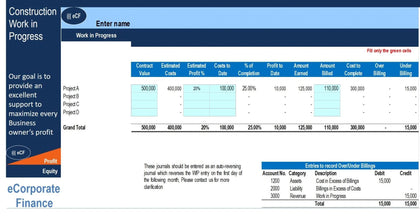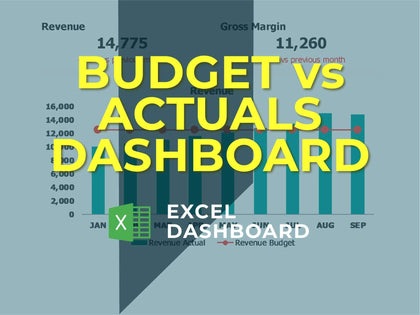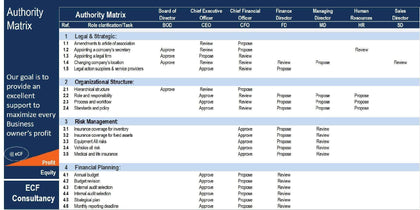Self-Storage Acquisition Real Estate Financial Model Excel Template
Model Highlight
Five-year self-storage acquisition real estate financial projection model template for startups and entrepreneurs to impress investors and get funded. Key financial charts, summaries, metrics, and funding forecasts built-in. Created with the mind of the self-storage acquisition real estate business. Use Self-Storage Acquisition Real Estate Financial Projection Model Excel to get funded by banks, angels, grants, and VC funds. Unlocked - edit all - last updated in Sep 2020.
Model Overview
Generate fully-integrated self-storage acquisition real estate p&l forecast, pro forma cash flow projection, a startup valuation projections for 5 years (on a monthly basis). Automatic aggregation of annual summaries on the financial summary report.
FINANCIAL MODEL ADVANTAGES
- See And Compare Business Expenses And Income For Periods
- Build A Payroll Plan With Employee Assumptions, Expenses, Benefits, And Taxes?
- Track Your Spending And Staying Within Budget
- Grow Your Business With Self-Storage Acquisition Real Estate Financial Model
- Is An Important Discipline Of Financial Planning
- Track Whether Spending Is On Target
- Compute A Startup Costs With Self-Storage Acquisition Real Estate Financial Model Excel Template
- Make Sure That The Business Can Afford To Pay
SELF-STORAGE ACQUISITION REAL ESTATE 3 WAY FORECAST MODEL KEY FEATURES
Confidence in the future
Using our financial model, you can effectively plan, prevent risks, manage stocks and cash flows and foresee your prospects for the next 5 years.
Track your spending and staying within budget
Have you written a vague idea of cash inflows and cash outflows on the back of a napkin? All is well and good. Looking at the p&l forecast will give you a snapshot of the past business performance, but it won't show the future in terms of the cash flow. With a statement of cash flows, you can plan future cash inflows and cash outflows and compare it to the budget, which can be invaluable information.
Run different scenarios
A Cash Flow Forecast shows you what your cash balance will look like taking into account the numbers you put into the template. It means you can play with the various variables that impact your cash flow forecast, i.e., wages, sales inflow, supplier payments, taxes, and so on. By adjusting the input amounts, you will be able to see what impact they will have on your businesses' cash flow and when this impact is likely to occur. A well-known example of this is the ability to forecast the effect a new member of staff might have on your cash flow over different periods. Increase the wage costs and see what happens to your cash flow. Running different scenarios in your Statement Of Cash Flows can have several benefits.
Simple-to-use
A very sophisticated Self-Storage Acquisition Real Estate Pro Forma Projection, whatever size and stage of development your business is. Minimal previous planning experience and very basic knowledge of Excel is required: however, fully sufficient to get quick and reliable results.
It is part of the reports set you need.
It doesn't matter you are worried about cash or not, setting up, and managing a Self-Storage Acquisition Real Estate 3 Way Financial Model should be a cornerstone of your reporting set. It's the main report of your business that must have in place to grow sustainably. Before you rush into rent more office space or making a new hire, you should always run a Cash Flow scenario. You can model how that action would impact your cash balance in the nearest future. Knowing whether or not plans are possible is crucial to minimizing risk.
Convenient, All-In-One Dashboard
Includes all required forecasting reports, including assumptions, forecasted income statement, cash flow pro forma, balance sheets, performance reviews and summaries for months and years (incl. numerous graphs and KPIs).
WHAT WILL I GET WITH SELF-STORAGE ACQUISITION REAL ESTATE FINANCIAL PROJECTION TEMPLATE EXCEL?
Break Even
Break-even analysis usually involves revenue and sales analysis. At the same time, it is essential to differentiate sales, revenue, and profit in the financial planning process. Revenue shows the total amount of money from sales of a product, and the profit is the revenue less all fixed and variable expenses.
Sources and Uses
Sources and Uses of Funds Statement is a critical financial spreadsheet in our Self-Storage Acquisition Real Estate Financial Projection Excel. Business owners will need this statement for bank loan applications and the meeting with potential investors. Many banks include this statement in the application process for a business loan. The Sources and Uses statement is equally important both for large companies and for start-ups. Large companies include Sources and Uses statement into their annual report for investors. The start-ups need to manage each source of funding and control each separate expense. Lenders appreciate Sources and Uses of Funds Statement because it excellently summarizes its financial plans and financial management strategies. This statement puts together the company's vision regarding the financing of the start-up or future expansion.
All in One Place
This Self-Storage Acquisition Real Estate Financial Model In Excel Template reflects all the main aspects of your business. It will be a roadmap that enables entrepreneurs to understand their business and their perspectives. As a start-up financial model, it will help understand cash flows and determine the cash burn rate. This is very important for any business because it shows how long money will last and which milestones the business owner can achieve with these expenditures.
Financial KPIs
The Self-Storage Acquisition Real Estate Finance Projection has key financial indicators (KPIs) that show sales and profitability performance: revenue growth rate, gross margin, and EBITDA margin. It also has KPIs related to cash flows and raising investment: the cash burn rate, runway and funding need. You can choose the KPIs relevant to your company and industry, and monitor your company's performance. For example, SaaS companies typically monitor and manage customer lifetime value (LTV), customer acquisition costs (CAC), LTV/CAC ratio, and the churn rate. For SaaS businesses, these KPIs are crucial.
CAPEX
Capital expenditures, or CapEx, calculations reflect the company's spendings to buy various assets that will bring long-term value to the company. CapEx is typically related to buildings, property, plant, and equipment (PPEs). Our Self-Storage Acquisition Real Estate Three Statement Financial Model has a pre-built tab for CapEX calculations that will help users determine the company's growth and expansion plans that require significant spendings on equipment and other assets. It is important for business owners and financial specialists to understand the relationship between the company's CapEx, deprecation, and financial statement.
Financial Statements
The template has a three-statement financial model with integrated proformas. It allows users to create a company's Balance Sheet, profit and loss proforma, and a projected cashflow statement with minimum efforts. For these proformas, users can input either historical or forecasted financial data. Forecasted financial statements show how a company will perform under various circumstances and allow users to integrate different assumptions in the Financial Model Excel Spreadsheet. For example, the company's management can see the economic impact of its decisions, such as price changes. Our well-built Self-Storage Acquisition Real Estate Financial Projection Excel shows stakeholders how the company's functions work together and how management's decisions impact its overall financial performance.
Profitability KPIs
Gross profit margin. A gross profit margin is a frequently used financial ratio that is one of the main indicators of a company's financial health. It reflects the difference between the revenues and the cost of sales. When the gross profit margin is improving, it means that the company's expenses related to the sale of goods or services are decreasing and/or revenues from such sales are increasing. A gross profit margin is usually reflected as percentage.










































